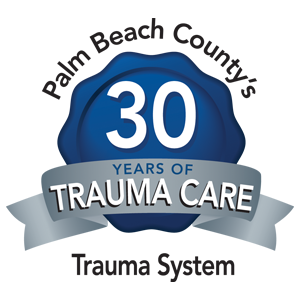
How to Beat the Heat and Celebrate Safely
Even with social distancing, summer is a season of fun. From June to August, people enjoy different outdoor activities, including swimming and hiking. If you’re just having a good time, what could happen? It takes planning to avoid emergencies in summer. Be prepared and know where your nearest emergency room is located. Let’s take on summer’s heat, and learn helpful tips to keep the fun in the 4th.
1. Heat Exhaustion
During the summer season, temperatures can swell up to three digits. Prolonged exposure to this amount of heat can affect the body’s water supply and lead to heat exhaustion.
Heat exhaustion is caused by dehydration. Some of its symptoms are dizziness, extreme thirst, fast heart rate, nausea or vomiting, pale skin, heavy sweating, irritability, mild confusion, muscle cramps and fainting.
How to Handle Heat Exhaustion
Heat exhaustion can lead to heatstroke when left untreated. Call 911 if you start vomiting or if you know someone who fainted because of heat exposure. On the other hand, if you experience less serious symptoms, get out of direct sunlight and move to a cooler area. Drink plenty of water, loosen your clothing and ask someone to fan your skin. You can also tap a cool, wet towel on your face, neck, chest and limbs.
2. Heatstroke
Exposure to extreme heat for long periods of time can also cause the body’s temperature control system to fail. Heatstroke is a serious condition. It occurs when the body’s temperature rises to at least 104°F and when neurological complications, such as hallucinations, confusion or irrational behavior, start to manifest.
Some other symptoms of heatstroke include seizures, rapid but shallow breathing, pale skin, rapid but weak pulse, dry skin, extreme thirst and sometimes fainting. Overweight people, older adults, children and people who have been drinking alcohol are at greater risk for heat-related illnesses.
How to Handle Heatstroke
Heatstroke is a life-threatening emergency so call 911 or go to the nearest ER immediately. Delaying medical care for a heatstroke can cause permanent brain damage and complications in the nervous system.
3. Firework-related Injuries
According to the U.S. Consumer Product Safety Commission, an average of 180 people go to the emergency room daily with firework-related injuries in the month of July, the majority of which happens on the days surrounding July 4.
Fireworks burn at about 2,000 degrees, hot enough to melt metals. Fireworks, when used improperly or when not manufactured well, can also lead to accidents, actual fire, breathing problems due to smoke inhalation and injuries such as chemical burns, cuts and eye trauma.
How to Handle Firework-related Injuries
Chemical burns and eye injuries are dangerous so you must call 911 right away. While waiting for help, you must remove clothing from the burned area, except if a piece of clothing is stuck to the skin. Run cool water (not cold) over the burn to lessen the pain, and apply a gauze bandage or a clean soft cloth. You may also take an ibuprofen or acetaminophen to relieve pain.
Safe Emergency Care
If you or someone you know experience any of these emergencies, do not hesitate to seek help. Call 911 immediately. Our hospital is safe and ready for you 24/7. In fact, we follow extra precautions to keep you safe. We sanitize our premises regularly. Our teams wear PPE, and we screen everyone who enters the hospital. Your safe care is our #1 priority.
Sources:
Centers for Disease Control and Prevention
Healthline
KidsHealth
National Safety Council
Surefire CPR
U.S. Consumer Products Safety Commission
U.S. Forest Service
World Health Organization
